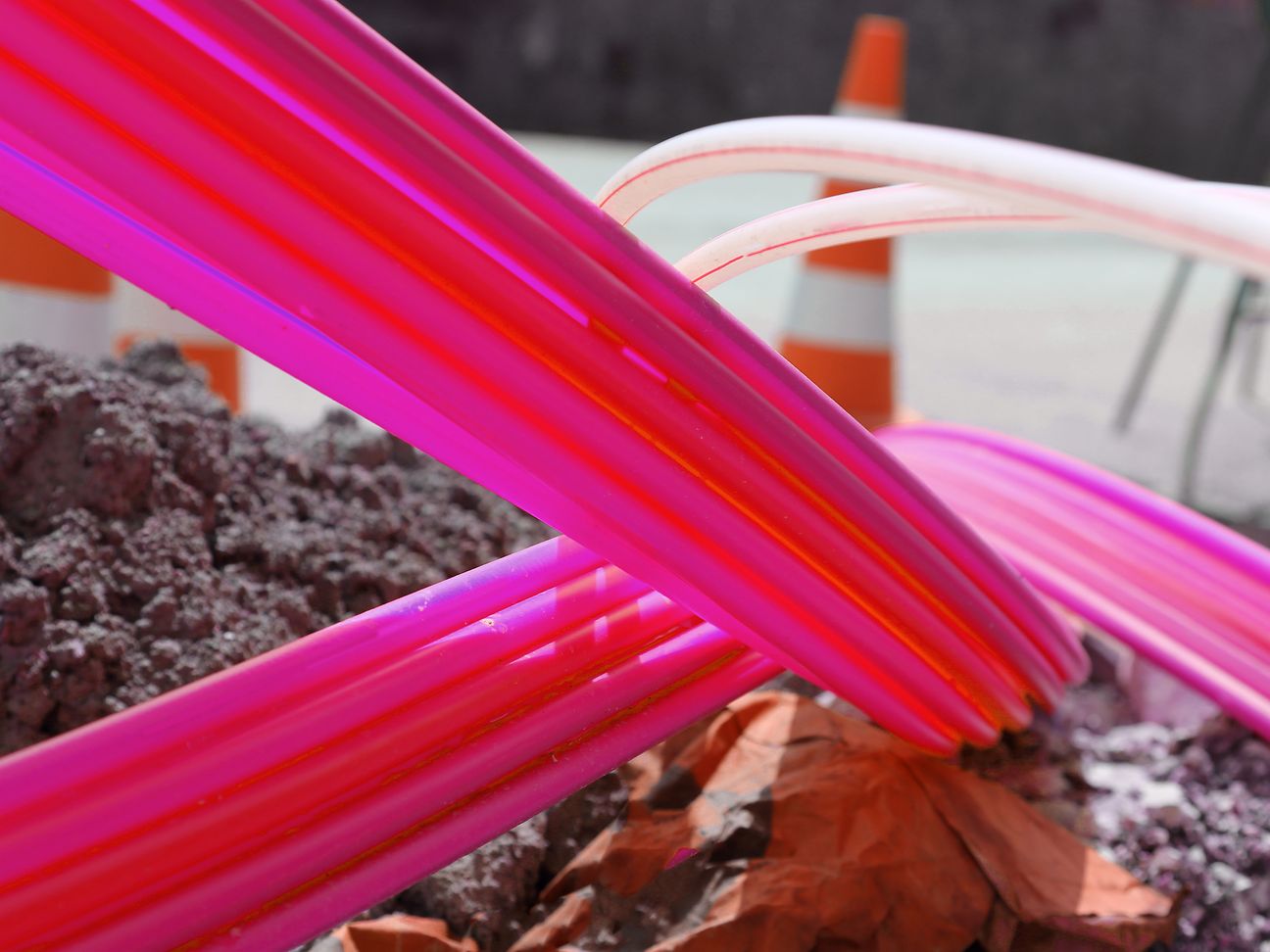

- Fiber-optic offensive: roll-out speed doubled, 1.2 million new households supplied with optical fiber
- 5G for all: 90 percent population coverage, 63,000 antennas
- City, country, network: Expansion in rural areas and metropolitan regions
- Live premiere: 5G standalone broadcasts concert by world star Dave Gahan
- Green network: Deutsche Telekom CO2-neutral by 2025, more energy efficiency through better network technology
Deutsche Telekom is expanding its network at record speed: with 1.2 million FTTH (fiber to the home) connections in 2021, the company has doubled its expansion performance compared with 2020. In the coming year, the company intends to increase the pace even further. The target is two million new FTTH connections in 2022. Telekom is also setting new records in the expansion of its mobile network. More than 63,000 antennas are now transmitting with 5G. 90 percent of the population can already use the latest mobile communications generation. By the end of 2025, 5G should also cover 90 percent of the map. Telekom has also technically upgraded more than 3,500 5G antennas in the 3.6 gigahertz band for 5G standalone. In this way, Telekom is preparing its network for future innovative 5G applications.
"Telekom is Germany's digital engine. That is why we are building our network seven days a week, 24 hours a day. In the city as well as in the countryside. We are massively accelerating our roll-out. In the coming year, we will go one better and invest around six billion euros in Germany. By 2030, every household and every company in Germany should have a fiber-optic connection. We will build a large part of this. But our competitors are also in demand," said Srini Gopalan, Member of the Board of Management of Telekom Deutschland. He also commented on the new German government's plans in terms of digitization: "The new coalition is focusing on FTTH as THE technology of digitization. We explicitly welcome this. Faster processes - including for applications and approvals - will also help us to speed up fiber roll-out. We support the digital set off in our country. Digital networks should bring people together. Their roll-out should no longer be stuck in paper files."
Claudia Nemat, Board Member for Technology and Innovation, ranked the progress in mobile roll-out: "Our forward-looking understanding of technology and the roll-out strategy based on it have ensured that Germany is already benefiting massively from 5G. And in the shortest possible time. We are running the roll-out marathon at sprint speed. Never before has a new generation of mobile communications been rolled out so quickly. At the same time, we are aware of our responsibility for climate protection. Networks and antennas consume energy. But they also help reduce emissions. For example, when virtual meetings replace business trips. In the long term, only digital technologies will enable us to reduce CO2 emissions to the necessary extent. That's why we are working on a broad basis to significantly improve the energy efficiency of our networks."
Fiber optics in rural and urban areas
Telekom aims to connect a total of ten million households with optical fiber by 2024. From 2024, an average of 2.5 million FTTH connections are to be added each year. This year alone, Telekom laid more than 70,000 kilometers of optical fiber across Germany. In total, Telekom's fiber-optic network covers more than 650,000 kilometers. Network expansion follows the open access principle. The resulting networks are open for use by Telekom's competitors.
"Optical fiber is fast, stable and future-proof. We are building a high-speed network that will ensure digital participation for everyone in Germany. As announced, we are focusing our roll-out on rural areas. By 2030, we want to build eight million fiber-optic connections in communities with fewer than 20,000 inhabitants. In addition, our GlasfaserPlus joint venture will provide four million rural households with a fiber-optic connection," said Srini Gopalan.
5G for all
Telekom is on the home stretch with the 5G rollout. In Germany, 90 percent of people can now surf with 5G. Of the total 63,000 5G antennas, 6,000 new ones were added this year. On the ultra-fast 3.6 gigahertz band, 5G is now available in more than 140 cities. More than 3,500 antennas at almost 1,200 locations are bringing high-speed 5G to more and more people.
World star Dave Gahan live on 5G Standalone
Telekom demonstrated the performance capabilities of the 5G network with a virtual performance by world star Dave Gahan, who performed together with his band Soulsavers via 5G Standalone at different locations in Berlin. Only the 5G real-time stream merged the individual presentations into a live concert. Dave Gahan said, " Being able to share my music with my musical partners and my fans is very important to me. Technologies like 5G, that allows that to happen more quickly and easily are fantastic."
Technically, Telekom's 5G network is ready for 5G standalone deployment. All sites that transmit on the 3.6 gigahertz band support this technology with immediate effect. They are connected in parallel to both the existing core network and the new 5G Standalone core network. Telekom plans to roll out 5G Standalone on additional frequency bands in the coming year. During this time, the technology will also be further developed and optimized. Commercial use will start as soon as customers can experience the applications. 5G Standalone does not require LTE technology in the core network. This technology forms the next stage of 5G. It enables a minimum response time of less than 10 milliseconds and so-called network slicing. The network is divided into virtual slices, which can be configured for individual requirements, for example for gaming or video streams.
Surfing on Telekom's green network
By using green power, Telekom's network will be completely green worldwide in 2021. By 2025, the company aims to achieve CO2 neutrality in its own direct and indirect emissions (Scope 1 and 2). An important lever for this is energy efficiency: the ratio of data volume in the network and the electricity required for this. Telekom aims to double its energy efficiency by 2024 with various measures. These included the shutdown of 3G. Network expansion is also contributing to more efficient energy consumption by replacing copper lines with fiber optics. Telekom also wants to use artificial intelligence and algorithms to better utilize its antennas.
Telekom is focusing on renewable energy, which already accounted for all electricity consumption in Germany in 2020. This resulted in CO2 savings of around 330,000 tons compared with the previous year. Telekom plans to test high-yield battery technologies for emergency power supply in the future. Climate neutrality along the entire supply chain to the customer is to be achieved by 2040.
About Deutsche Telekom: Deutsche Telekom at a glance


